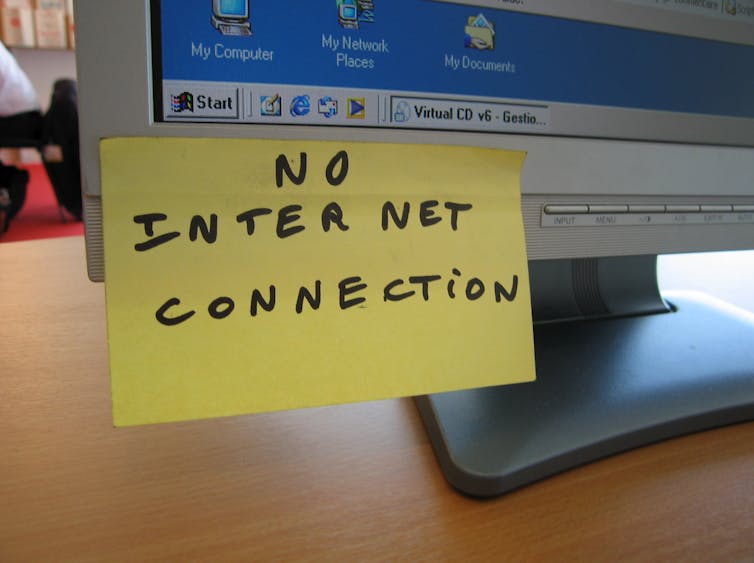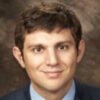Some of the most vulnerable Americans lack access to the real-time information people need to respond to COVID-19, writes Gregory Porumbescu.

(ben dalton/Flickr, CC BY-SA)
By Gregory Porumbescu
The Conversation
 Amidst the flurry of social media updates about the COVID-19 pandemic, a chart illustrating the importance of flattening the curve has gone viral. The idea is that taking measures to slow the spread of COVID-19 lowers the chances of overwhelming hospitals and increases the chances that all of those who become ill will have access to treatment. The logic behind flattening the COVID-19 curve is intuitive – don’t panic, but be careful.
Amidst the flurry of social media updates about the COVID-19 pandemic, a chart illustrating the importance of flattening the curve has gone viral. The idea is that taking measures to slow the spread of COVID-19 lowers the chances of overwhelming hospitals and increases the chances that all of those who become ill will have access to treatment. The logic behind flattening the COVID-19 curve is intuitive – don’t panic, but be careful.
Unsurprisingly, the internet is playing a critical role in getting the word out to be careful and to help flatten the COVID-19 curve. Websites that present government data are giving people a sense of where cases are concentrated, and numerous other websites list numbers to call, symptoms to check for and tips for prevention. Increasingly universities are shifting courses online, businesses are asking employees to work from home and shoppers are ordering groceries online to minimize time in crowded spaces.
While the internet is an important resource in efforts to stay informed and proceed with daily lives during the COVID-19 pandemic, these online approaches to reducing risk are not available to everyone in the same way. As the Federal Communications Commission reports, more than 24 million Americans have no access to broadband internet, while the Pew Charitable Trusts projects 163 million Americans lack access to reliable broadband internet connections.
This digital divide falls along existing lines of socioeconomic inequality – those who are poorer and live in less affluent areas pay more for less reliable service. And while smartphones are more prevalent across all socioeconomic groups, they’re a poor alternative for broadband internet access for tasks like working from home or attending classes online.
The digital divide leaves some of the most vulnerable Americans – a significant proportion of the 163 million who lack access to a reliable broadband internet connection – at a significant disadvantage when it comes to accessing the real-time information people need to respond to COVID-19. This is a problem not only for people without broadband access, but also for society as a whole as we struggle to flatten the COVID-19 curve.
There will be many important lessons to be learned from the COVID-19 pandemic. A less obvious, yet nonetheless important, lesson is that the digital divide is complicating efforts to respond to the challenges society faces. Indeed, a poignant lesson from this pandemic is that finding ways to bridge the digital divide is quickly becoming a matter of life and death.
Gregory Porumbescu is assistant professor at the School of Public Affairs and Administration at Rutgers University Newark.
This article is republished from The Conversation under a Creative Commons license. Read the original article.
The views expressed are solely those of the author and may or may not reflect those of Consortium News.
Please Donate to Consortium News.
Before commenting please read Robert Parry’s Comment Policy. Allegations unsupported by facts, gross or misleading factual errors and ad hominem attacks, and abusive or rude language toward other commenters or our writers will not be published. If your comment does not immediately appear, please be patient as it is manually reviewed. For security reasons, please refrain from inserting links in your comments, which should not be longer than 300 words.


Totally agree with Steve, Skip, and Sally.
Most so called real-time information tends to be bogus. As a result, an article that supports yet again that technology is a panacea for most everything falls short of the realities of what the online world has devolved into; a cesspool of disinformation and drivel.
A local doctor’s office or a Naturopath can easily provide all of the recommendations that people require to stay safe during this current virus outbreak…
This article assumes that TPTB has an aim other than culling the herd of “undesirables”. Free Public Broadband is very “doable”, but not for a society that is a slave to unrestrained Capitalism ruling every sphere of our lives.
As shown in this article, at the state-level, the United States response to the coronavirus has been nothing short of imposing martial law:
see: viableopposition.blogspot.com/2020/03/the-imposition-of-medical-martial-law.html
If a government wants to gain total control of its citizens, the use of health emergency plans is the way to accomplish their goal. By using fear, particularly of disease, governments can more easily manipulate and control the masses.